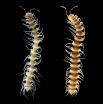(Press-News.org) From the playground to the board room, people often follow, or conform, to the behavior of those around them as a way of fitting in. New research shows that this behavioral conformity appears early in human children, but isn't evidenced by apes like chimpanzees and orangutans.
"Conformity is a very basic feature of human sociality. It retains in- and out-groups, it helps groups coordinate and it stabilizes cultural diversity, one of the hallmark characteristics of the human species," says psychological scientist and lead researcher Daniel Haun of the Max Planck Institute for Evolutionary Anthropology and the University of Jena.
"This does not mean that conforming is the right thing to do under all circumstances — conformity can be good or bad, helpful or unhelpful, appropriate or inappropriate both for individuals and the groups they live in. But the fact is that we conform often and that human sociality would look very differently without it," Haun explains. "Our research shows that children as young as 2 years of age conform to others, while chimpanzees and orangutans instead prefer to stick with what they know."
The research, published in Psychological Science, a journal of the Association for Psychological Science, is novel in that it provides a direct comparison between apes and humans indicating that the tendency to abandon one's own preferences just in to fit in appears to be particularly pronounced in humans.
In previous research, Haun and colleagues had found that both human children and chimpanzees rely on the majority opinion when they are trying to learn something new, which makes sense if the group has knowledge that the individual doesn't. But other research has shown that human adults sometimes follow the majority even when they already have the relevant knowledge, just so that they don't stand out from the group.
To find out whether very young children and apes would also show this so-called "normative" conformity, Haun and co-authors Michael Tomasello and Yvonne Rekers presented 18 2-year-old children, 12 chimpanzees, and 12 orangutans with a similar reward-based task.
Each participant was shown a box that contained three separate sections, each of which had a hole in the top. By interacting with the box, the participants learned that although the ball could be dropped in any of the three sections, only one of the sections would deliver a treat (peanuts for the apes and chocolate drops for the children).
After familiarizing themselves with the box, the participants then watched while three familiar peers, who had been trained to all strongly prefer the same colored section of the box (different from the participants' preference), deposited their balls.
The tables then turned and the participant had to decide which section to drop his or her own balls into as his or her peers looked on.
The results revealed that children were more likely to adjust their behavior to match that of their peers than were the apes. Whereas the human children conformed more than half of the time, the apes and orangutans almost always ignored their peers, opting instead to stick with the original strategy they had learned.
A second study with a group of 72 2-year-olds showed that children tended to switch their choice more when they made the choice in front of their peers than when they made the choice privately.
Interestingly, the number of peers didn't seem to make a difference in whether children conformed — children were equally likely to switch their choice whether it was demonstrated by one peer or by three peers.
The clear pattern of conformity among the toddlers suggests that the motivation to fit in emerges very early in humans.
"We were surprised that children as young as 2 years of age would already change their behavior just to avoid the relative disadvantage of being different," says Haun.
The researchers are currently investigating whether environmental factors, such as institutionalized schooling and different child-rearing practices, impact children's tendency to conform.
INFORMATION:
This research was funded by the Max Planck Society for the Advancement of Science.
For more information about this study, please contact: Daniel Haun at daniel.haun@uni-jena.de.
The article abstract is available online: http://pss.sagepub.com/content/early/2014/10/29/0956797614553235.abstract
The APS journal Psychological Science is the highest ranked empirical journal in psychology. For a copy of the article "Children Conform to the Behavior of Peers; Other Great Apes Stick With What They Know" and access to other Psychological Science research findings, please contact Anna Mikulak at 202-293-9300 or amikulak@psychologicalscience.org.
Toddlers copy their peers to fit in, but apes don't
2014-10-30
ELSE PRESS RELEASES FROM THIS DATE:
Einstein-Montefiore investigators present aging research at Gerontological Society of America's Annual Scientific Meeting
2014-10-30
October 30, 2014—(BRONX, NY)—Investigators at Albert Einstein College of Medicine of Yeshiva University and Montefiore Medical Center will present their latest aging research at the Gerontological Society of America's (GSA) 67th Annual Scientific Meeting. Topics include the identification of a genotype that can predict survival, risk factors for cognitive impairment and the cellular biology of aging. GSA 2014 will take place November 5-9, 2014 in Washington, D.C.
"Einstein-Montefiore has distinguished itself in a range of aging fields – from basic biology ...
Dartmouth study finds restoring wetlands can lessen soil sinkage, greenhouse gas emissions
2014-10-30
Restoring wetlands can help reduce or reverse soil subsidence and reduce greenhouse gas emissions, according to research in California's Sacramento-San Joaquin River Delta by Dartmouth College researchers and their colleagues.
The study, which is one of the first to continually measure the fluctuations of both carbon and methane as they cycle through wetlands, appears in the journal by Global Change Biology.
Worldwide, agricultural drainage of organic soils has resulted in vast soil subsidence and contributed to increased atmospheric carbon dioxide concentrations. The ...
Even mild depressive symptoms result in poorer lumbar spinal stenosis surgery outcome
2014-10-30
Even mild depressive symptoms can weaken the outcome of lumbar spinal stenosis surgery, according to a recent study completed at the University of Eastern Finland and Kuopio University Hospital. Patients with depressive symptoms had a weaker functional capacity post-surgery even five years after surgery. The results were published in The Spine Journal.
"The results indicate that attention should be paid to even mild depressive symptoms both before and after the surgery. This would allow health care professionals to recognise patients who might benefit from enhanced psychosocial ...
Four new dragon millipedes found in China
2014-10-30
A team of speleobiologists from the South China Agriculture University and the Russian Academy of Sciences have described four new species of the dragon millipedes from southern China, two of which seem to be cave dwellers. The study was published in the open access journal ZooKeys.
The millipede genus Desmoxytes is well-known because the dragon-like appearance of the species in it. The four new species all can be recognized by their spiky body, the distinctive characteristic which gave the representatives of the genus their unique common name.
Unlike other groups of ...
Identifying the source of stem cells
2014-10-30
EAST LANSING, Mich. – When most animals begin life, cells immediately begin accepting assignments to become a head, tail or a vital organ. However, mammals, including humans, are special. The cells of mammalian embryos get to make a different first choice – to become the protective placenta or to commit to forming the baby.
It's during this critical first step that research from Michigan State University has revealed key discoveries. The results, published in the current issue of PLOS Genetics, provide insights into where stem cells come from, and could advance ...
Together we are strong -- or insufferable
2014-10-30
This news release is available in German. How do we as individuals prompt our fellow humans to behave socially? This is one of the central questions relating to social dilemmas in game theory. Previous studies assumed that it is almost impossible to control cooperation in large groups. Nonetheless, scientists from the Max Planck Institute for Evolutionary Biology have now demonstrated that each of us can exert an influence on the cooperative behaviour of others. However, the possibilities available to the individual are limited in this regard, particularly in the context ...
Lung cancer patients with MIA have comparable 97.7 percent 5-year survival as patients with AIS
2014-10-30
Chicago, October 30, 2014—Lung cancer patients with minimally invasive adenocarcinoma (MIA) have similar, positive five-year disease-free survival (DFS) and overall survival (OS) rates as patients with adenocarcinoma in-situ (AIS), according to research presented today at the 2014 Chicago Multidisciplinary Symposium in Thoracic Oncology. The Symposium is sponsored by the American Society of Clinical Oncology (ASCO), the American Society for Radiation Oncology (ASTRO), the International Association for the Study of Lung Cancer (IASLC) and The University of Chicago ...
Researchers find bat influenza viruses unlikely threaten human health
2014-10-30
MANHATTAN, Kansas — Bats seen at Halloween this year may not be quite as scary as they appear – at least when it comes to the spread of specific viruses. A research project conducted in part by a team of researchers in the College of Veterinary Medicine at Kansas State University suggests that influenza viruses carried by bats pose a low risk to humans.
"Bats are natural reservoirs of some of the most deadly zoonotic viruses, including rabies virus, Ebola virus, Henipaviruses and SARS coronavirus," said Wenjun Ma, one of the lead investigators and an assistant ...
Pterostilbene, a molecule similar to resveratrol, as a potential treatment for obesity
2014-10-30
This news release is available in Spanish.
Obesity is a chronic disease caused by a whole range of factors and defined as an excessive accumulation of body fat. It is a metabolic disease very prevalent in developed countries and a significant risk factor for developing certain pathologies and alterations like insulin resistance, diabetes, fatty liver, alterations in plasma lipids and hypertension, among others.
The traditional guidelines for preventing and treating obesity include following a low-calorie diet and doing moderate physical activity over the long ...
Can parents make their kids smarter?
2014-10-30
TALLAHASSEE, Fla. — Reading bedtime stories, engaging in conversation and eating nightly dinners together are all positive ways in which parents interact with their children, but according to new research, none of these actions have any detectable influence on children's intelligence later in life.
Florida State University criminology professor Kevin Beaver examined a nationally representative sample of youth alongside a sample of adopted children from the National Longitudinal Study of Adolescent Health (Add Health) and found evidence to support the argument that ...




